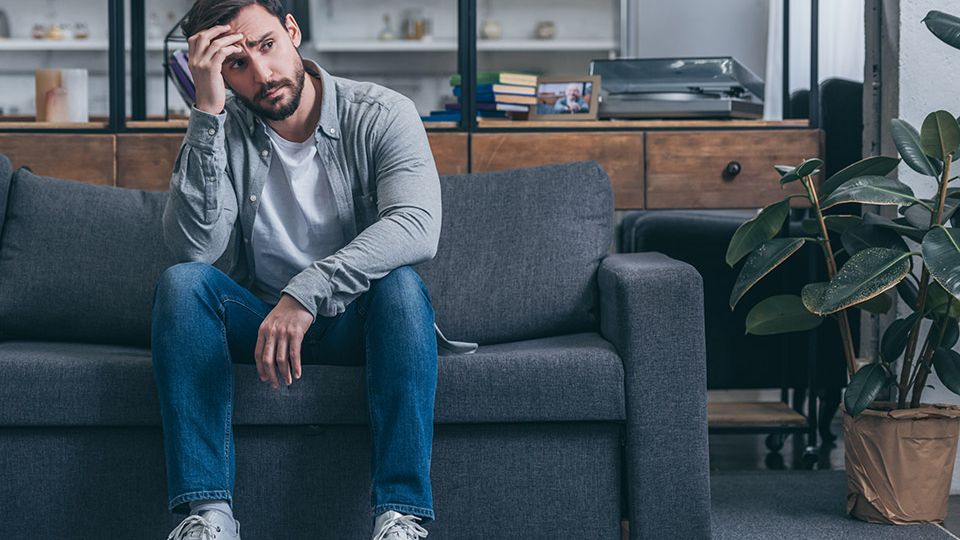
How to Manage Anxiety and Panic Attacks More Effectively
How much time and mental energy do we spend stressing about what could occur tomorrow, next month, or next year? How often do we worry about trying to prevent something that might never happen?
Anxiety is the body’s way of responding to stressful situations, creating a fight-or-flight response in the face of danger. When your sympathetic nervous system activates, it increases heart rate and alertness, preparing you for action.
Occasional anxiety can be helpful when responding to a serious threat or in less deadly situations that need our attention, like preparing for a job interview.
Frequent anxiety and panic attacks, however, can be very harmful to mental and physical health. If you are constantly in activation mode, geared up for action and anxious and worried over everyday events, your body and mind can become debilitated.
Developing healthy habits to prevent and respond to anxiety is essential for staying calm, happy, and at your best. In this article, I’m explaining what you need to know about anxiety:
- The causes and symptoms of anxiety
- How to manage anxiety in the short and long term
- How to get through panic attacks
- Strategies for minimizing everyday anxiety and feeling calmer and more grounded
Types of Anxiety Disorders and Symptoms
We’ve all experienced anxiety at one time or another. It’s normal to sometimes worry about things like performing well at work or school, raising kids, and going on a first date.
Anxiety disorders go beyond normal worrying. People with anxiety disorders experience frequent, intense, and persistent worry about everyday scenarios. Common symptoms include the following.
- Feeling nervous, tense, or restless
- A sense of panic or impending doom
- Trouble focusing on anything but worrying
- Feeling weak or tired
- Fatigue and/or trouble sleeping
- Higher than normal heart rate
- Sweating and/or trembling
- Hyperventilation
Anxiety disorders come in many forms. Below are three of the most common types.
- Generalized anxiety disorder: Excessive worrying or fear for little or no reason. The worry and fear can be constant and debilitating.
- Panic disorder: Sudden and overwhelming fear that triggers a panic attack. Symptoms of a panic attack include chest pain, excessive sweating, noticeable heartbeat (palpitations), and shortness of breath.
- Social anxiety disorder: Intense worrying or self-consciousness in social situations. People with social anxiety disorder may obsess over being embarrassed in front of others.
What Causes Anxiety?
Triggers are cues in the environment which can lead to anxiety. They can be external or caused internally via the senses. Common anxiety triggers include:
- Sensations (such as smell or touch) that remind you of a traumatic event, such as a medical emergency
- Revisiting traumatic areas, like a certain room or street
- Overwhelming environments
- Thoughts of the future or past
- Thoughts about something you haven’t finished
- Focusing on something you wished was different or didn’t happen
- Financial stress
- Health conditions and/or medications
- Thinking about anxiety (anxiety or panic attacks can be triggered by the mere thought of having anxiety)
Normally, anxiety is a natural and temporary response to stress. However, it is important to note that frequent feelings of anxiety condition our brains to have more anxiety in the future.
If you’ve gone through this and now experience constant anxiety or fear that becomes overwhelming, you may be dealing with an anxiety disorder.
How to Manage Anxiety
Shifting to a healthier, more sustainable way of thinking is not easy. How does anyone break unhealthy habits? The answer is: greater awareness.
Our brains are so complex, yet can be simple when we really understand the wiring that forms unhealthy results. To alter unhealthy habits, our brains need new information in order to carve out new pathways that lead to different results.
By noticing the negative results of your actions–for example, worrying about tomorrow immediately makes it more difficult to breathe–you become more aware of your behavior and sensations.
This creates more clarity and understanding so you can begin to “uncondition” your brain and have a healthier attachment with anxiety. You can find a path to reset your brain and create more effective behavior. The more aware you are, the less overwhelming anxiety and panic attacks will be.
To address anxiety long-term:
1. Pay attention to your triggers.
2. Notice how they make you feel.
3. Be curious and investigate the behaviors they create.
Greater awareness can help to reset unhealthy behaviors and improve health and quality of life in the long run.
For your day-to-day needs, try implementing one of the following strategies. Once you’ve mastered that one, move on to the others.
1. Breath into anxiety
Anxiety can cause shallow breathing or shortness of breath, which can sometimes lead to even greater anxiety. In these moments, focus on your breathing. Mindful breathing is an easy way to relieve anxiety, decrease stress and depression, and help with chronic pain.
1. Sit or stand in a quiet area. Close your eyes.
2. Put your hands on your stomach.
3. Breathe in “calm” through your nose for 5 counts, hold for 5 counts. Open your mouth and breath out “anxiety” for 5 counts.
4. Notice your stomach rise and fall. Feel your heartbeat slow and become more even.
5. Do this 5 times.
6. Ask: What do you notice in your body?
Quick tip: Many of my patients also find it helpful to count breaths in order to calm themselves. For example, breathe in on 1, breath out on 2. Repeat, continuing to count 1-2, 1-2, or count up to 10 before starting over.
2. Examine your body (Body Scan)
In moments of extreme anxiety, shift your attention and focus to your physical sensations in your body.
- Can you hear your heart beating?
- Do you notice more sensations in the right or left side of your chest?
- Do you feel heat in your chest?
- Does your chest feel heavy or hollow?
- What do you notice in your stomach?
- Do you notice pressure, tension, tightness, emptiness, heaviness, heat, a prickly feeling, unease, pain, fidgeting, restlessness?
- How does your jaw feel?
Embrace your attention with curiosity. The more specific and curious you are with the sensations in your body, the more resilience you will build when experiencing anxiety symptoms.
This is one technique that will guide you to lean toward your difficult sensations (resilience and strength) rather than resisting them (which makes anxiety symptoms worse).

3. Notice what you are experiencing
One quick tip that I often share with my patients: bring awareness to what is already happening. When a panic attack hits, recognize that you’re having a panic attack and know that it will eventually pass.
Accept that you know what is happening, you know what to do, and that you will be okay. Remember that when you recognize your triggers, you are better prepared to handle triggers differently.
4. Build practical and daily routines
Having a practical daily routine creates space for you to feel secure, clear your mind, and ground yourself for your day. This will maximize your chances of being able to handle anxiety or panic more effectively and enhance your ability to regulate difficult emotions.
To start your routine, wake up a little earlier than you need to start your day. Spend 5 minutes in the morning alone to ground yourself.
For example: wake up, close your eyes for a body scan, then do 10 segments of short breathing exercises (counting 1-2, 1-2, etc.). Finish off by writing 3 things you are most thankful for today. When you get in the shower, bring attention to how the water feels on your back.
Also, give your body what it needs to thrive throughout the day. Eating a healthy diet is essential to good physical and mental health. Some foods in particular have been linked with reduced anxiety:
- Salmon
- Chamomile tea and green tea
- Yogurt and other probiotic foods
- Dark chocolate
- Turmeric
Be sure to eat properly portioned meals at regular intervals to keep your energy levels consistent.
Lastly, don’t forget about the importance of sleep and exercise to your health. Anxiety can manifest physically in the body, especially if experienced long-term. Going to sleep and waking up at the same time every day takes care of your body and mind, injects calmness into your life, and minimizes anxiety.
5. Limit news and social media
In this fast-paced world, FOMO (the fear of missing out) can leave us glued to social media and news outlets. Endless feeds can make us addicted to the constant stream of information, much of which is negative and dramatic.
Experts call our addiction to negative news “doom scrolling.” This behavior can significantly contribute to anxiety and panic attacks.
Be aware of how actions affect your mental health. Notice what increases anxiety, such as ingesting too much news or social media. Assess whether you are more anxious after watching hours of the news and whether it is difficult for you to unplug from the constant stimulation.
These are indications that you may need to minimize news and social media. Ask yourself, “Is watching/reading/listening to this going to be helpful for me?” If the answer is no, realize that you have the control to walk away from something that is harmful to you.
6. Don’t avoid your anxiety — focus on what you can change
When faced with anxiety and/or panic attacks it’s often tempting to avoid triggers altogether, but trying to distract yourself from symptoms will also increase symptoms.
If you notice the symptoms coming, let them come. Ask yourself, “In this moment, what do I have control of?” Then, continue to identify your triggers and work on building a healthy response to anxiety-inducing situations in order to build resilience.
If you need assistance along the way, I am an experienced psychologist who specializes in anxiety disorders, depression, and more. I help patients “reset” ingrained thinking spirals that cause and exacerbate anxiety, and guide them toward a more serene life.
Contact me now to schedule a virtual appointment.














